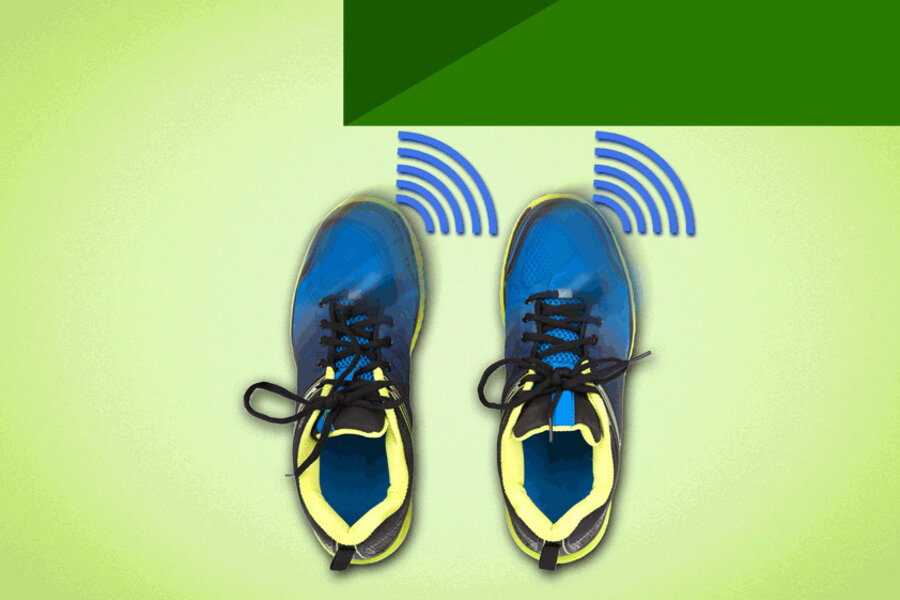These boots are made for vibrating – in space
Loading...
It’s already hard enough to be an astronaut, a feat that only a few out of thousands of people can accomplish. But try walking in space with a suit made of 14 layers that weigh in at 250 pounds here on Earth.
It’s bulky, it’s uncomfortable, and it limits astronauts’ ability to see and feel the terrain around them, which can cause them to tumble. This is why engineers at the Massachusetts Institute of Technology (MIT) and nearby Charles Stark Draper Laboratory are working on boots with built-in sensors and motors that vibrate on unsteady terrain to help the wearer navigate around obstacles.
“Falls in space can jeopardize astronauts’ missions and even their lives,” writes MIT in an announcement. “Getting to one’s feet in a bulky, pressurized spacesuit can consume time and precious oxygen reserves, and falls increase the risk that the suit will be punctured."
According to Cathleen Lewis and Lisa Young, a curator and a conservator at the Smithsonian’s National Air and Space Museum, respectively, a spacesuit failure – of which there have been four documented – has never claimed any astronaut lives.
“Please forget everything that you have seen in science fiction movies about spacesuit failures. They are usually overly dramatized and frequently wrong,” Dr. Lewis told the Reddit community.
Still, an astronaut can never be too safe, especially as NASA plans to send a crew to far-off Mars in the coming decades.
The new space boots, still in the early stages of development, would employ “haptic” motors, which are responsive to touch, at the toe, heel, and the front of the outside of the foot. The idea is that the boots would pulse or vibrate when the wearer risks colliding with an obstacle.
“Trying to provide people with more information about the environment – especially when not only vision but other sensory information, auditory as well as proprioception, is compromised – is a really good idea,” Shirley Rietdyk, a professor of health and kinesiology at Purdue University who studies the neurology and biomechanics of falls, said in the MIT announcement. “From my perspective, [this work could be useful] not only for astronauts but for firemen, who have well-documented issues interacting with their environment, and for people with compromised sensory systems, such as older adults and people with disease and disorders.”
Developments of the boots could fit into MIT’s work in building navigation systems for visually impaired people.
Engineers at the institute have already developed a computer chip for processing 3D camera data to help impaired people get around in their environment. The chip fits into a computer about the size of a binoculars case worn around the neck. It uses an experimental 3-D camera that records spatial data and converts into instructions that appear on a mechanical Braille interface. The information would alert a visually impaired user about the distance to the nearest obstacle in the direction the person is moving.








